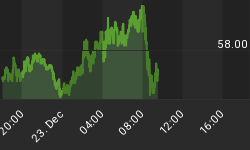Several of the currency moves of 2014 are reaching an overextended condition, which sets up opportunities for reasonably safe countertrend trades into 2015. This article provides an example of what to watch for with the Japanese Yen, and there are other (perhaps even better) trades to catch in other currencies. As with most of our currency trades, this setup is informed by close analysis of the U.S. Dollar Index.
For those traders who prefer to wait for stronger, trending moves, this article also gives an early indication of when and where to look for a resumption of the downward trend in the Yen.
The Yen has made a spectacular decline since 2011, and our charts have been keeping with it all along the way. In particular, we have been watching for more than a year for the Yen to reach the current price/time area - specifically levels near or below 0.008731 in late 2014. The forecast is coming to pass, even though we have revised our wave count slightly. Our projection was informed by a combination of what the reader can see on the monthly Yen chart below - the dominant 11-month cycle, the guiding channel, the Elliott wave count, and associated Fibonacci relationships.

Broadly, we are looking for a lengthy sideways/upward corrective move in the Yen to start developing soon, which presents a countertrend opportunity for traders who are willing to be patient. We will describe this forecast more specifically, but first let us see what additional insights can be gained from watching the corresponding behavior of the U.S. Dollar.
Our forecast for the Dollar during 2014 has been working very well, and we now see price approaching the completion of its first major upward impulsive move, labeled as (i). The monthly chart of the Dollar Index, below, shows an impending wave (ii) which could begin soon and could continue into early 2015. The beginning of the downward corrective move in the Dollar should line up approximately with the start of the upward corrective move in the Yen, and also with similar moves in the other currencies we watch.

The weekly chart for the Dollar Index offers a more detailed picture, and we have drawn a speculative path forward. Price appears to be near completion of minor wave iii of (i), and it also is doing a reasonably good job of recognizing the channel that is anchored by the endpoints of waves i and ii. Next, we expect a minor fourth-wave correction, perhaps to make an initial test of the lower channel boundary, to be followed by a final push upward.

A temporary reversal in the Dollar at the completion of wave (i) is the signal that a trader should watch for in order to initiate a countertrend trade in other currencies such as the Yen or the Euro. While the Dollar probably will not reverse at precisely the same time as the other currencies do, nevertheless a solid signal of a short-term trend change in the Dollar should provide the basis for confirmation of trades. Cautious traders may wait for the Dollar to break out of its channel, while more adventurous traders might simply watch for a lower high after the possible completion of minor wave v of (i) near the top of the channel.
Turning back to the Yen, the weekly chart below shows how a failure of the psychologically important price support of 0.008731 may lead to a stronger wave of selling into lower supports. An expanded version of this article at our website presents some specific support levels to watch.
















